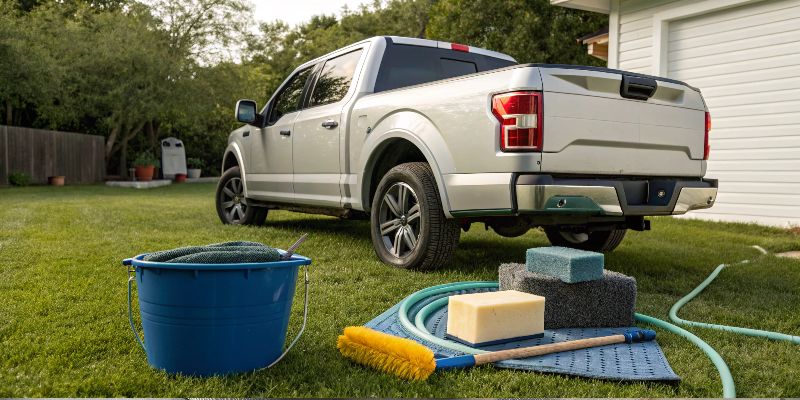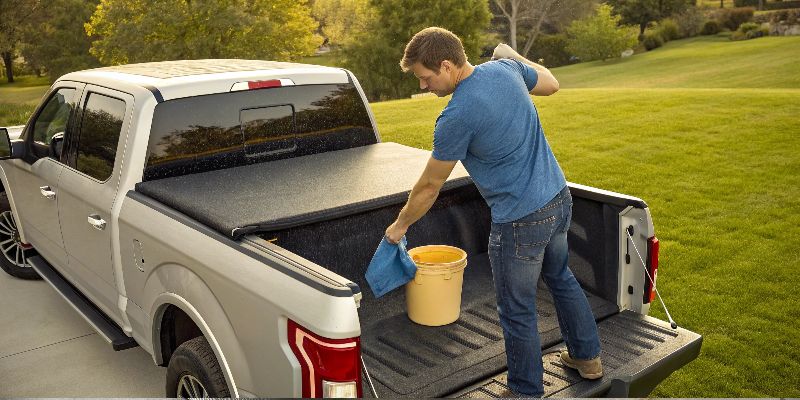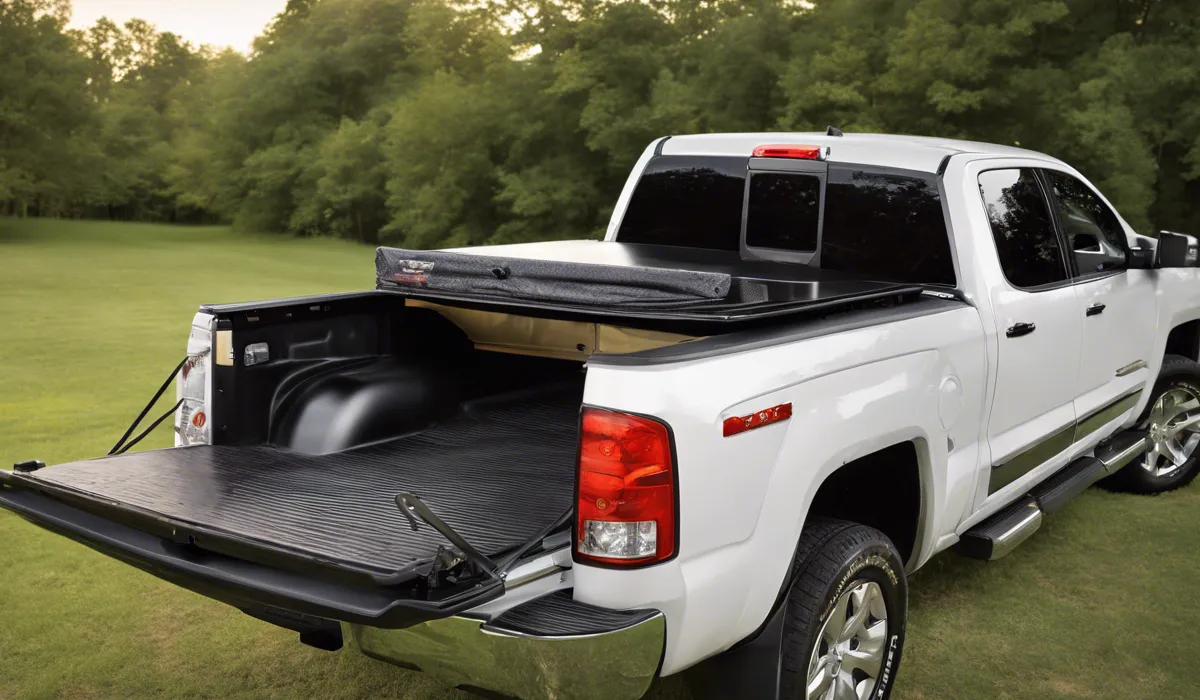To clean a tonneau cover, first brush off loose dirt, then wash with mild soap and water. Rinse thoroughly, avoid harsh chemicals, and let it air dry completely before rolling or folding.
Necessary Cleaning Supplies

List of Recommended Cleaning Products
To begin, let’s focus on the cleaning agents that are safe and effective for your tonneau cover.
It’s important to opt for cleaning products specifically designed for tonneau covers or mild soap solutions.
Avoid using harsh detergents, as they can damage the material of your cover.
Look for products that are labeled as ‘vinyl-safe’ or ‘for automotive use’ to ensure compatibility with your tonneau cover’s material.
Tools and Materials Needed
For a thorough clean, you will need a few basic tools and materials.
A soft brush or sponge can help you gently scrub the cover without scratching it.
Microfiber towels are great for wiping away dirt and grime without leaving lint behind.
If you have one, a rubber squeegee can be effective in removing excess water after rinsing.
Water Source and Considerations
When it comes to rinsing your tonneau cover, a garden hose is usually sufficient.
If you choose to use a pressure washer, be cautious. The high pressure can damage the cover if not used properly.
Set it to a low-pressure mode and hold it at a distance to safely rinse your cover. Remember that the goal is to effectively clean, not to power wash with force.
Step-by-Step Cleaning Process

Step 1: Removing Loose Debris
Start by using a soft-bristled brush to gently sweep away loose dirt, leaves, and other debris from the surface of the cover.
This prevents scratching the material during the wet cleaning process. Take your time to ensure all particles have been removed.
Step 2: Rinsing the Cover
Once the loose debris is cleared, rinse the cover with water to prepare it for cleaning.
Ensure the entire surface is wet to help the cleaning solution spread and work effectively. A gentle flow from a hose will suffice for this step.
Step 3: Applying Cleaner and Scrubbing
Apply your chosen cleaner onto the wet tonneau cover and use a soft brush to work it into the material.
Scrub gently in a circular motion, paying extra attention to areas with visible dirt or stains.
This step should not be rushed; allow the cleaner to sit for a moment to break down tough grime.
Step 4: Rinsing Off the Cleaner
After scrubbing, rinse the cover thoroughly with water, ensuring that all soap and cleaning residues are washed away.
It is crucial to remove all the cleaner to prevent any potential damage or residue build-up on the tonneau cover.
Step 5: Treating Tough Stains
If you encounter stubborn stains that did not come out during the initial wash, apply a small amount of cleaner directly to the stain and let it sit for a few minutes.
Use a soft brush to gently work on the stain, then rinse thoroughly.
Step 6: Drying the Tonneau Cover
After rinsing, it’s important to dry the cover completely. Use microfiber towels to blot and gently wipe away excess water.
Avoid rolling or folding the tonneau cover until it is completely dry to prevent mold or mildew growth.
Letting it air dry in the sun is an effective way to ensure it’s completely dry.
Maintenance and Protection Tips

Regular Maintenance Schedule
To keep your tonneau cover in top condition, establish a regular cleaning schedule.
Depending on your usage and exposure to elements, a monthly clean can be sufficient.
Regular cleaning prevents dirt build-up and makes each cleaning session easier.
Applying Protectants and Conditioners
Once your tonneau cover is clean and dry, applying a UV protectant or conditioner can extend its life and maintain its appearance.
These products can help protect against sun damage, cracking, and fading.
Make sure to select products that are appropriate for the material of your cover.
Tips for Preventing Damage and Wear
Preventative measures can go a long way in preserving your tonneau cover. Avoid placing sharp or heavy objects on the cover that could puncture or strain the material.
When loading and unloading cargo, be cautious not to drag items across the cover. Always secure your cargo to prevent it from shifting and causing damage.
Lastly, during winter months, remove snow and ice gently to prevent tearing or stretching the material.
FAQs About Cleaning a Tonneau Cover
How do I start cleaning my tonneau cover?
To begin cleaning your tonneau cover, brush off any loose dirt from the surface using a soft brush or a dry cloth.
What kind of soap should I use to wash my tonneau cover?
Use a mild soap, such as car wash soap or mild detergent, diluted with water to wash your tonneau cover.
Can I use a pressure washer on my tonneau cover?
No, you should avoid using a pressure washer as the high pressure can damage the cover material. Stick to gentle washing.
How should I dry my tonneau cover after washing?
Let the tonneau cover air dry completely before rolling or folding it to avoid any damage or mildew growth.
Is it safe to use bleach or other harsh chemicals to clean a tonneau cover?
No, you should avoid harsh chemicals like bleach, as they can damage the cover’s material and affect its durability.
Final Thoughts
Cleaning a tonneau cover effectively involves brushing off debris, using a gentle soap and water mixture for washing, thoroughly rinsing, and steering clear of abrasive chemicals.
Ensuring the cover is completely air-dried before rolling or folding will maintain its condition and prolong its usefulness.
